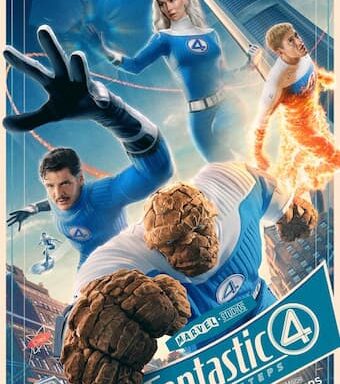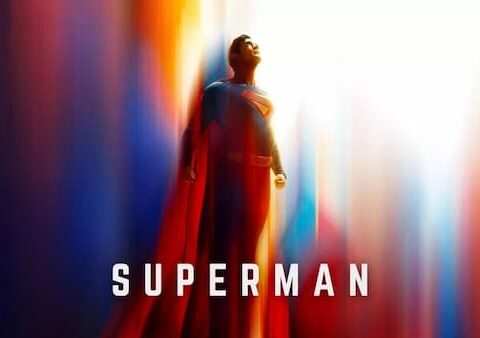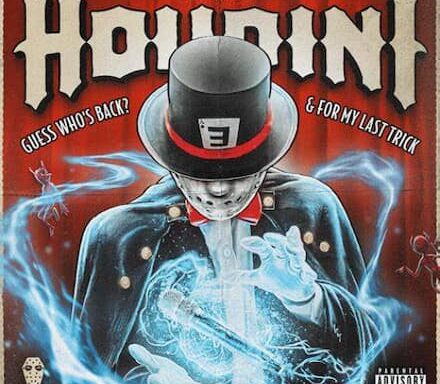There’s just something about Jessica Drew.
I was never going to be able to resist getting in on the new Spiderwoman title; even though it might’ve been wiser to wait and catch up with all the ‘Spider-Verse’ comics first. I’m helplessly under her spell, see.
Like Carol Danvers/Captain Marvel, Jessica Drew is a character that was somewhat left in the wilderness for a very long time; as with Danvers, when I was first getting into comics as a teenager in the early-to-mid nineties I don’t recall ever seeing Jessica referred to or even appearing in anything; although like a game of Where’s Wally (or ‘Where’s Waldo’, if you’re a Yank), I might’ve just missed all her appearances.
She is definitely one of my favorite Marvel characters, however; and reading these first few issues of the new Spiderwoman solo title has only reinforced that. Here is a character that is – and always was – visually stunning, well written, witty and generally well fleshed out as a personality. A character who, when she’s on a page, draws all your attention, regardless of who else is present.
She’s such a good character in fact that the shortcomings and niggling problems with the stories in this instance – and there are some of those – are overcome by the sheer quality and readability of Jessica herself.
Some characters are so inherently entertaining that they can do that; others can’t.

The first three issues of this series, as I said, are taken up by the Spider-Verse crossover material and so don’t offer much scope for character growth or exploration. Starting a new title in the midst of a crossover is itself a somewhat questionable approach. Even the new(ish) character Silk is given a clean start-point for a new mythology in Silk #1 (reviewed here) unladen with crossover baggage; whereas Spiderwoman #1 – 3 would be a confusing mess to most people who aren’t up-to-scratch with the broader Spider-Verse business.
That to me was an off-the-mark decision; Jessica’s solo run should’ve either started before the Spider-Verse stuff or it should’ve been held back a month or so until after Spider-Verse was done, as was the case with both Silk and Spider-Gwen.
Having said that, I haven’t fully read all of the Spider-Verse stuff; though what bits of it I have read, including the Spider-Verse Prelude, have me looking forward to playing catch-up. Most of what I have read of it has in fact been in these first few issues of the new Spiderwoman title; and while reading a few isolated chapters of a much larger storyline can be both maddening and confusing, I just couldn’t resist doing so when I saw that Jessica Drew had a new solo title.
I actually managed more or less okay, in terms of making sense of the story elements and ascertaining the broad strokes of the larger story-setting. I had to do some (cheat) reading on The Inheritors and ‘Morlun’ first, but in essence Spiderwoman #1 in particular was entertaining enough to counteract the problem. And thinking about it, when I first got into comics as a kid I was jumping into titles right in the middle of storylines anyway and figuring it out as I went along, so there’s nothing new in that necessarily.
Spiderwoman #1 has Jessica, Silk and Spiderman Noir arriving into an alternate-reality New York where they are being tracked by the Inheritors Brix and Bora.
A lot of the ‘Spider-people’ team-ups going on in the broader crossover material have fallen on the uninteresting side of things and have been more a case of playing to novelty and gimmicks; but this Jessica, Silk and Spiderman Noir team that starts off Spiderwoman #1 is genuinely cool, with fun dynamics. And the situation of Jessica having to act as guardian for the Spider-Messiah type that is young Silk/Cindy Moon (also a pretty cool character) is also a compelling enough scenario. Spiderman Noir – a Spiderman from an alternate nineteen-thirties – is also, for that matter, a decent fixture to have kicking around and may warrant more print life.
If you’re not familiar with the premise of the Spider-Verse story, basically a villainous family called The Inheritors is travelling the multi-verse, hunting down “spider totems” to feed their life-force. In reaction, various ‘Spider people’ or versions of the Spiderman role from different realities across time and space are teaming up and working together to defeat these Inheritors. Key to all this is the discovery of the arachno-powered young woman ‘Silk’, who seems to attract the Inheritors in a particular way.
In Spiderwoman #1, Jessica is in charge of protecting the young woman from the pursuing Inheritors.

What draws you in immediately in Spider Woman #1 is the humour; the entire book is brimming with snappy, witty dialogue and banter and it begins on the first page, literally the first panel, blending somewhat effectively with the general absurdities of the setting and scenarios. “We’re riding giant lizard-donkeys through purple sand, headed for a Manhattan carved out of gold, but you’re so super-hero jaded, you can’t even admit it’s cool,” quips Silk/Cindy Moon. The tone and style of that very first page puts you at ease and establishes the nature of what will then follow.
Spiderwoman #1 seems to revel in its conceptual absurdities in a way that’s both tongue-in-cheek but still engaging.
On a side-note, Silk is a flat-out cool character, entirely warranting the solo series she’s been given (which is also pretty good, judging by the first two issues). She actually works really well playing off Jessica, however, and I wonder if once she’s off doing her own thing in her own title the dynamics won’t be as good. But everything works about her; she has a meaningful, considerable origin story, some interesting motivation and a well-defined emotional center that colours most of her behaviour. There’s a vulnerability to her that makes her easy to sympathise with, while she has a wit that also makes her enjoyable to read.
The Nimbus III (obligatory Star Trek reference of the week) type ‘alternate New York’, complete with Beduin-like lurkers, is just the right mixture of off-kilter and entertaining, brought to life by subtle details and aided by great art and winning colours. In particular the faintly purple colouration to all the scenes, due to the atmospheric effects of the purple sand, imparts a really nice, albeit subtle, aesthetic to this early sequence; it’s one of those details that just works quietly without drawing attention to itself, but little details like this really make a big difference to the immersive qualities of the reading experience. Greg Land, Hay Leisten and particularly Frank D’Armarta deserve a lot of credit for how pleasurable on the eyes this book is.
And one of the great things about the whole Spider-Verse thing, though it can be said to have its problems, is that it allows for a virtually infinite array of settings and conceptually interesting ideas to be played out.
The time/reality shifting generally creates some cool settings that capture the imagination, drawing you in; in the case of the nineteen-thirties, the Black-Cat Speakeasy where Jessica meets with (our) Spiderman, Gwen and some of the others is a terrific setting for atmosphere; with a nice, slightly noir-ish touch of nostalgia that is almost cinematic.
Not much else happens in Spiderwoman #1, but when Spiderman sends Jessica off on a solo mission crucial to winning the war against the Inheritors, young Silk is left in the care of Anya and (Spider) Gwen (who rather amusingly lose her pretty much straight away, despite having just been lectured by Jessica on the importance of not letting the child out of their sight). This sets up both Jessica’s adventure for #2 and #3 as well as Silk’s own little foray into the future, post-nuclear New York City.
Separating Jessica and Silk doesn’t help the material that follows in #2 and #3, but was obviously deemed a story necessity; the character dynamics here are really cool though, particularly how Jessica reacts to Spiderman’s new orders (there’s really a sense that Jessica is the more dominant personality), how Gwen and the others react to Jessica in general, and how the eavesdropping Silk reacts to how she’s being spoken of.
Perceiving herself to be a burden as well as a danger to the others, Silk runs off on her own, taking her chances against the Inheritors’ pursuit.
Spiderwoman #2 continues with most of the same qualities (and occasional weaknesses). ‘Loom World’, with its sometimes jarring hotch-potch of different realities cobbled together by the Inheritors, loses some of the subtlety, but nevertheless has its charms. Seeing cowboys on horses mingling with robots and astronauts in space-helmets in a location half ancient-pirate-infested-seaport and half futuristic-Coruscant-like metropolis provides a colorful, interesting setting, even if gets a little jarring.
In Loom World, the central reality from which the Inheritors operate, Jessica discovers this reality’s version of herself, who happens also to be a Grade-1 Super-Bitch who shacks up with pirates and is on intimate terms with the villainous Morlun. This kind of encountering-your-alternate-reality-self motif is as much a cliche by now in comics and science-fiction as time-travel and temporal paradoxes, though it can still be fun (as much of Spider-Verse demonstrates).

In this particular instance, it isn’t so great and there are niggly little things that annoy (why does this alternate-Jessica wear the same costume as our Jessica, for example?); but they’re the kind of things you have to just let slide. You could waste time wondering how likely it is that Jessica would encounter her alternate-universe self so quickly after arriving in Loom World (which makes the place seem incredibly small), or more importantly why this alternate-Jess just happens to work in a place that proves absolutely crucial for our Jess to gain access to.
A degree of suspension-of-disbelief is of course a requisite for any comic-book readers and you can hardly embrace the whole Spider-Verse concept on the one hand and then get nit-picky about little plot-conveniences like these on the other; these are simply the kinds of things we get used to as comic-book readers and have to tolerate.
I’m generally not a fan of the whole pirates thing either, so some of what we see in #2 and #3 don’t really do it for me (and neither does this reality’s Namor: the Sub-Mariner is now a mere textbook pirate, though with no real explanation or logic). I know some people are into that though, so maybe it caters to them more.
Jess’s encounter with her alternate-self, however, is essential to the plot as it leads to our Jess impersonating her and eventually gaining access to information crucial to the broader campaign to defeat the Inheritors.
Jess’s acted-out affair with this universe’s Namor is a tough sell to read, managing to tick all the annoyance boxes. I’m not sure how essential this angle is to the plot, as there may have been some other way to have Jess find the ‘Master Weaver’ (more on him a moment). Her having to get up close and personal with the male, Twilight-Saga-ish types of Loom World is a touch cringe-inducing; but to its credit, it’s meant to be and is done in a knowing way, with Jess’s own inner monologue revealing her attitude towards it; “Proud feminist or not, gross feels better than dead.”
So onto Spiderwoman #3 and Silk’s only place in all the multi-verses where she can escape to and be safe is a future nuclear wasteland. Her making friends with a cockroach hiding in an old tuna can is fitting enough, a tongue-in-cheek reference to the commonly regurgitated bit of trivia that a cockroach can surive a nuclear holocaust. Jessica getting to punch Mary Jane Watson in the face (albeit an alternate-reality Mary Jane) has its charms too.
Jessica’s feigned affair with the overly trashy-novel-like pirate archetype would again be unreadable were it not for the fact that we have her own inner monologue making things more tongue-in-cheek, more palatable; “It’s like having dinner with the boring bits of a bargain bin romance novel,” she tells us in typically droll fashion (making it alright – we’re all in on the ruse). The ‘Master Weaver’, “caretaker of the web of fate”, is an interesting fixture in the action, both conceptually and visually. His emergence in the story – or more accurately Jess’s happening upon him – proves crucial to the resolution of the larger Spider-Verse storyline, even if it seems a little sudden and arbitrary.
There’s also some more niggling comic-bookisms with the convenient ‘McGuffin’ plot-device the Master Weaver hands Jess to help resolve the story; but again, we’re used to these kinds of things and most big comic-book events are always more about the drama of the problem rather than that of the solution. As Silk herself says in Spiderwoman #4; “Best not to think about it; alt-universes are screwy.”
Spider-Gwen and Silk coming to Jessica’s rescue at the conclusion to #3 restores some more of the fun to the affair, complete with suitable “entrance banter”. While we’re on the subject, Spider-Gwen too is a cool character, I have to say; probably not as interesting as Silk, but possibly just as likeable. It’s going to be interesting (for me anyway) to eventually read Spider-Verse in its entirety, having already read these first three issues of the Spiderwoman title. I’ve already got a sense of how the story is resolved, partly from Spiderwoman #3, but I’m a completist, so I’ll still be doing catch-up anyway.
All in all, Spiderwoman #1 – 3 are thoroughly entertaining comics for a few reasons, primarily the character dynamics and the art, though they have their minor shortcomings too.
Spiderwoman #4 is where we can say this new series properly begins, as it is the first post Spider-Verse issue. Lingering business on Loom World is wrapped up in the first few pages, with alternate-Jess being shepherded into a leader role in the post-Inheritors Loom World which is in danger of descending into lawlessness.

Again, it feels like a bit of a stretch in terms of believability; what exactly are her leadership qualities, for starters? Just because she’s an alternate-reality Jessica Drew doesn’t make her fit to lead or trustworthy enough to entrust with stewardship of an entire society. Our Jessica knew her only briefly and witnessed only entirely negative, irresponsible traits in her, and yet she installs this woman as a leader of masses? Has Jessica Drew been taking tips from US foreign policy advisors?
But it is at least a tidy way to wrap that side of things up and that’s how these things tend to go.
That aforementioned problem aside, Spiderwoman #4 is actually a delight. After the convoluted business of Spider-Verse, #4 is a refreshingly character-centered book, aided by an endearing support cast and character dynamics.
Spiderwoman #4 is in fact my favorite single issue of any title this year so far. Silk and Gwen go their separate ways from Jessica (and as it happens, into their own solo titles), and Jess is soon back in New York with Carol. Any time Jessica and Carol Danvers are together makes for enjoyable, endearing reading. Those two just play off each other really nicely, not unlike Kitty and Illyana from the X-Men side of things. Once the Loom World affair is left behind, we join Jess and Carol catching up in Manhattan, headed for Avengers Tower where Jess has something important to announce.
Reading this issue reinforces the fact that this would’ve been the tidier start-point for the series; not that the Spider-Verse stuff taking up the first three issues isn’t entertaining. I wrote already that Captain Marvel and Spiderwoman should be given their own series together or mini-series and I stand by that.
Never mind Stark/Rogers: Danvers/Drew should at some point in the future be the core dynamic of an Avengers incarnation.
Jessica Drew is one of those characters who somehow brings the best out of other characters when she’s around them; you can put her somewhere and she’ll somehow make other characters more enjoyable to read than they necessarily are elsewhere, whether its Steve Rogers, Gwen, even Spiderman or whoever else. Jessica has that effect, whether it’s in Avengers stories or Spider-Verse or anything else. That, I tend to think, is the a mark of a truly great character.
Jessica’s big announcement – which she only gets to after an impromptu ruck with a giant alien/monster accidentally unleashed by Hank McCoy and Vision – is that she wants to quit the Avengers and go solo. All the build-up with her being nervous about breaking this to Steve Rogers is really sweet characterization, aided by having Danvers as her sounding board.
Even with all this caliber and experience, Jess, like probably most Avengers, is still tongue-tied and reverential around Rogers, especially this elderly Rogers.
The art in #4 in particular is terrific, but actually Greg Land’s and Jay Leisten’s art in all the issues so far has been really effective. There are nice touches scattered about too; Hank McCoy and Vision get a really cool, albeit peripheral, cameo, bickering about the difference between a “micro moon” and an asteroid.
And the Carol/Jess banter of course flows fluently and enjoyably (“you used to fly with your cheeks out…”, Jess sharply reminds the once soft-porn-like Ms Marvel days when Carol dares to criticise Jess’s costume).
Which actually is stage-setting for what’s to come in Spiderwoman #5 and beyond – specifically a massive change in look and costume. From what previews I’ve seen so far of the next issue, I’m liking this imminent change in style; and I’m curious where things are going to go with Jess and this series now.
Dennis Hopeless remains as writer, so the quality level should be the same.
As far as these opening few issues of the Spiderwoman title are concerned though, they’re genuinely enjoyable affairs with some really winning dynamics and they do a good job in fact of exhibiting just how good a character Jessica Drew is and why.





Nice review! I’ve heard that the new issues, since the new creative team, are fantastic.
Thanks Hortah! I’m reviewing those issues at the moment. I’m kind of finding it hard to decide where I stand with it!
I have never heard of Spiderwoman. Looks pretty cool!
She IS very cool! Nice to hear from you, smilingdsgirl; I have to catch up on all your most recent posts 🙂